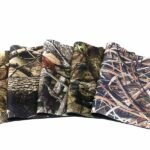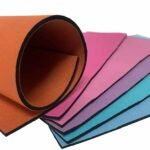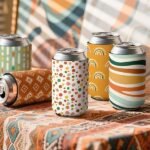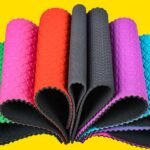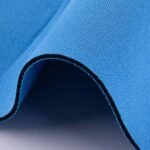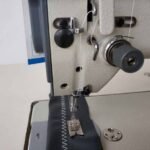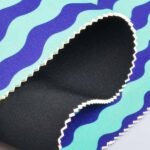Neoprene has become the go-to choice for engineers, product designers, and purchasers looking for reliable thermal insulation in everything from industrial covers to wetsuits. Its unique closed-cell foam structure traps air pockets, dramatically reducing heat transfer. But one question rises above the rest: What temperature extremes can neoprene handle without losing performance? Answering this isn’t just academic—it directly impacts product lifespan, safety, and customer satisfaction.
Neoprene insulation typically operates effectively between –60 °C and +120 °C, with specialized grades extending from –70 °C up to +200 °C. Performance depends on foam density, additives, and manufacturing process. Standard neoprene (CR foam) handles –40 °C to 120 °C, while oil-resistant or flame-retardant variants push those limits further. Proper grade selection ensures durable insulation under your specific temperature demands.
From scuba divers exploring icy waters to HVAC technicians installing piping in desert plants, the right neoprene grade can mean the difference between a long-lasting solution and costly downtime. Imagine a remote Arctic research station whose equipment fails because the standard neoprene seals cracked at –50 °C. Or picture an oil refinery where covers warped under 150 °C steam, leading to heat loss and energy waste. In both scenarios, understanding neoprene’s temperature tolerances—and choosing the correct formulation—becomes mission-critical. Let’s dive into the key questions that will guide your next specification.
What Is Neoprene and How Does It Provide Thermal Insulation?
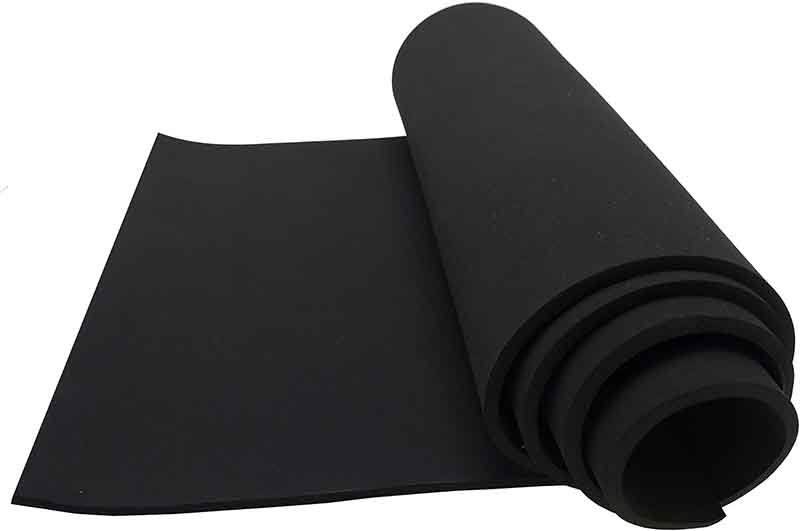
Neoprene is a synthetic rubber (polychloroprene) formed into closed-cell foam, creating millions of tiny gas pockets that dramatically reduce heat transfer. These cells trap air, acting as a barrier to conductive, convective, and radiant heat. The inherent chemical stability of neoprene ensures it retains flexibility from subzero to elevated temperatures, making it ideal for insulation applications across industries like marine, automotive, and construction.
- Closed-Cell Foam Structure:
- Neoprene foam is manufactured by mixing liquid polychloroprene with a foaming agent and then vulcanizing. During vulcanization, gas bubbles expand and become encapsulated by rubber walls, forming a closed-cell matrix. This structure is key: gases are poor conductors of heat, so trapped air drastically slows thermal conduction.
- By contrast, open-cell foams allow air to move between cells, increasing convective heat transfer. Closed-cell neoprene maintains its insulating properties even when compressed or bent, because cells do not collapse easily.
- Multi-Modal Heat Reduction:
- Conduction: Heat must pass through rubber walls—far less efficient than metal or concrete.
- Convection: Sealed cells block air currents inside the foam.
- Radiation: Neoprene absorbs and scatters infrared radiation within its opaque microstructure.
- Material Stability Across Temperatures:
- The chemical backbone of polychloroprene includes chlorine atoms that enhance thermal stability and fire resistance. Neoprene resists thermal degradation better than natural rubber, which can crystallize or melt outside narrow temperature bands.
- Standard neoprene remains flexible down to –40 °C and up to +120 °C. At extreme cold, some stiffness increase occurs, but properly formulated grades resist cracking. At elevated temperatures, degradation slowly begins above +120 °C, but short-term spikes up to +150 °C–200 °C are possible with additives.
- Additives and Fillers:
- To tailor insulation, manufacturers incorporate fillers like carbon black (improves tensile strength and UV resistance) or silica (enhances high-temperature performance). Flame-retardant or oil-resistant formulas add halogenated compounds or plasticizers, slightly altering thermal conductivity but widening usable ranges.
- Practical Implications:
- When specifying insulation for refrigeration lines, dive gear, or steam pipes, engineers must balance foam density (higher density = better insulation but heavier) against flexibility and cost. Neoprene’s versatility lets you fine-tune these trade-offs.
Which Neoprene Grades Offer Different Temperature Ranges?
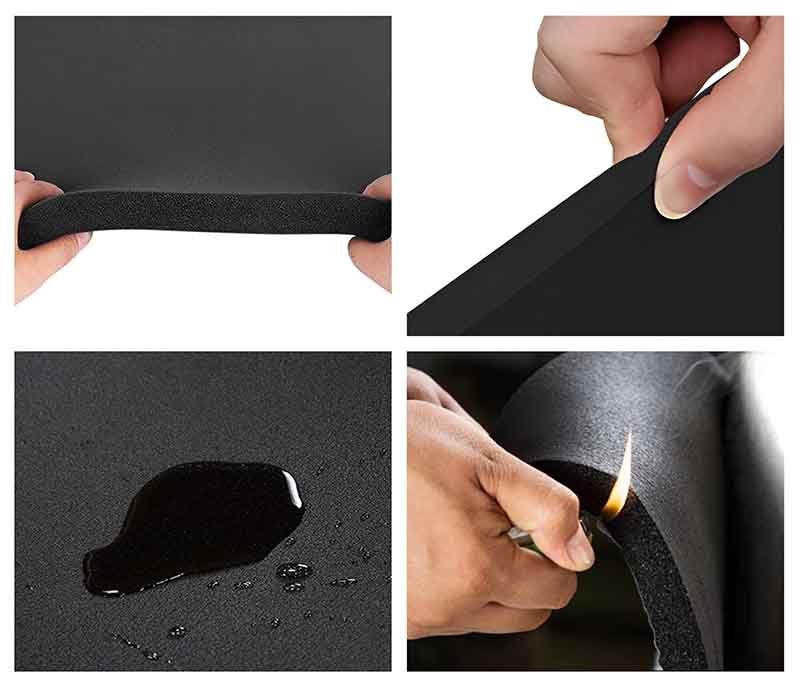
Neoprene grades vary by formulation and density. Standard closed-cell CR foam handles –40 °C to +120 °C. Oil-resistant grades extend upper limits to ~150 °C. Flame-retardant and high-temperature formulations can reach +200 °C. Cryogenic neoprene resists down to –70 °C. Density (kg/m³) affects performance: lighter foams (30–80 kg/m³) suit milder ranges, while dense foams (>200 kg/m³) excel in extreme conditions.
- Standard Neoprene (CR Foam):
- Temperature Range: –40 °C to +120 °C.
- Density Range: 30–200 kg/m³.
- Applications: HVAC gaskets, appliance insulation, wetsuit linings.
- Pros & Cons: Excellent all-purpose; limited above 120 °C.
- Oil-Resistant Neoprene (CR Oil):
- Temperature Range: –30 °C to +150 °C.
- Formulation: Added plasticizers and chlorine content adjust oil resistance.
- Applications: Engine covers, hoses, automotive gaskets.
- Notes: Slight increase in thermal conductivity; tested per ASTM D2000.
- Flame-Retardant Grades:
- Temperature Range: –20 °C to +175 °C (+200 °C short-term).
- Standards: UL 94 V-0 rating, ISO 6941.
- Additives: Brominated or chlorinated flame retardants, antimony oxide.
- Use Cases: Electrical enclosures, cable jacketing, aircraft insulation.
- High-Temperature Neoprene:
- Temperature Range: –10 °C to +200 °C.
- Fillers: Silica, ceramic powders to resist oxidation.
- Applications: Industrial furnace seals, steam manifolds, chemical plant insulation.
- Cryogenic Neoprene:
- Temperature Range: –70 °C to +80 °C.
- Characteristics: Special blowing agents maintain cell integrity at very low temperatures.
- Applications: LNG transfer hoses, cold-storage door seals.
- Comparative Table of Neoprene Grades Grade Temp. Min (°C) Temp. Max (°C) Density (kg/m³) Key Additives Typical Uses Standard CR Foam –40 120 30–200 None HVAC, wetsuits, general insulation Oil-Resistant CR Oil –30 150 50–220 Plasticizers, chlorine boost Engine covers, hoses Flame-Retardant Neoprene –20 175–200 100–250 Halogenated FR agents Electrical, aerospace insulation High-Temperature Neoprene –10 200 150–300 Silica, ceramic fillers Industrial furnaces, steam seals Cryogenic Neoprene –70 80 50–180 Specialized blowing agents LNG hoses, cold storage seals
How Are Temperature Ranges for Neoprene Products Tested and Rated?
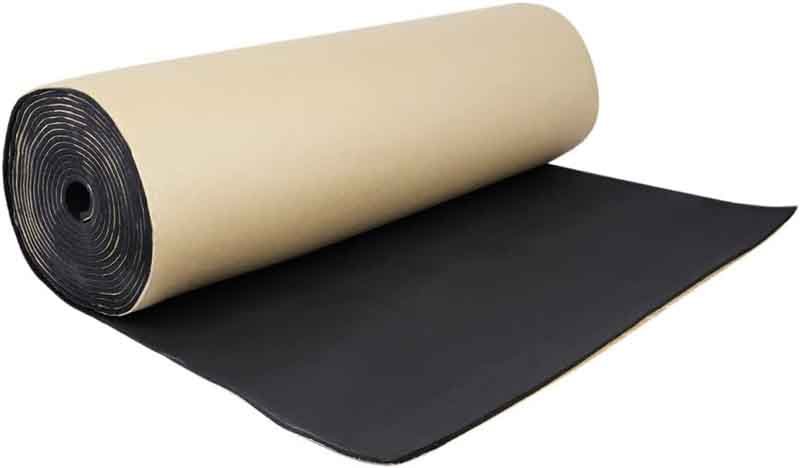
Temperature ratings derive from standardized tests: ASTM D1056 for foam classification, ASTM D2000 for rubber properties, ISO 6941 for flame retardancy, and EN 45545 for railway fire safety. Samples undergo controlled thermal cycling, compression set, and tensile tests at specified temperatures. Data on deflection, hardness, and dimensional change determine usable ranges. Reputable labs provide certification, ensuring material meets performance claims and regulatory requirements.
- ASTM D1056 Foam Classification
- Overview: Defines sponge rubber by mechanical properties, compression set, density, and cell structure.
- Procedure: Samples conditioned at 23 °C, then tested at temperatures up to +75 °C. Tests include compression deflection and compression set.
- Outcome: Categorizes foam into Class 1, 2, 3 based on deformation and recovery characteristics.
- ASTM D2000 Rubber Property Specification
- Overview: Broad industry standard for rubber materials used in automotive and industrial components.
- Key Tests: Tensile strength, elongation, hardness (Shore A), and ozone resistance.
- Temperature Testing: Materials are aged at high temperatures (e.g., +70 °C, +100 °C) for defined periods; changes in tensile strength and elongation quantify thermal degradation.
- ISO 6941 Flame Retardancy Testing
- Purpose: Ensures neoprene meets flammability standards for cable jacketing and protective clothing.
- Method: Vertical and horizontal burn tests under controlled heat flux.
- Certification: V-0, V-1, or V-2 rating depending on flame propagation and drip behavior.
- EN 45545 Railway Standards
- Context: Specifies fire behavior of materials in rolling stock.
- Tests: Heat release rate, smoke density, toxicity index.
- Relevance to Neoprene: Critical for train interior insulation, wiring ducts, and seals.
- Advanced Thermal Cycling
- Cycling Protocol: Repeated exposure to low and high extremes (e.g., –50 °C to +150 °C) over hundreds of cycles.
- Measurements: Dimensional stability, hardness change, and visual crack inspection after each cycle.
- Importance: Simulates real-world temperature swings in outdoor equipment or aerospace components.
- Third-Party Certification
- Role of Labs: UL, TÜV, and Intertek provide unbiased testing.
- Documentation: Test reports and certificates are critical for regulatory compliance (e.g., CE marking, RoHS).
By understanding these testing protocols, buyers can verify that the neoprene they specify will actually perform in their application, rather than relying on broad temperature claims.
What Key Factors Influence Neoprene’s Insulation Across Temperature Extremes?
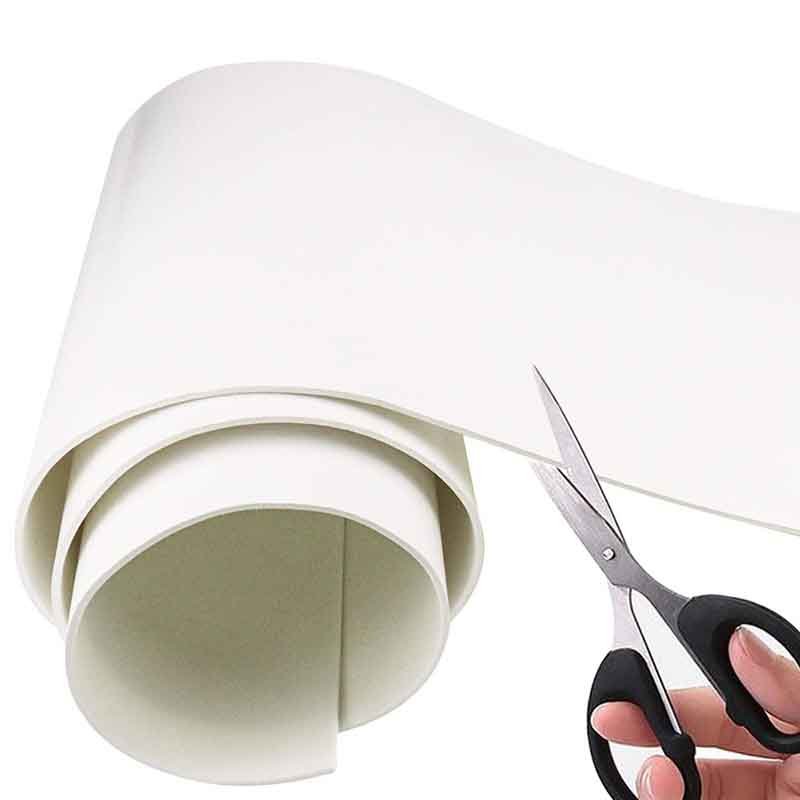
Insulation performance depends on foam density, cell size, chemical formulation, thickness, and manufacturing quality. Higher-density foams trap more air per unit volume, lowering thermal conductivity. Smaller, uniform cells resist heat flow better. Additives like silica or carbon black alter thermal behavior. Sheet thickness scales resistance linearly. Uniform vulcanization and precise curing ensure consistent cell structure. Together, these factors determine how neoprene resists heat gain or loss at extreme temperatures.
- Foam Density & Cell Structure
- Density Impact: Denser neoprene (150–300 kg/m³) contains more rubber per unit volume, reducing convective pathways but increasing conductive rubber mass. Optimal densities (80–200 kg/m³) balance insulation with flexibility.
- Cell Size & Uniformity: Smaller, evenly distributed cells create more barriers to heat flow. Manufacturers control cell size by adjusting foaming agent concentration and mixing speed.
- Chemical Formulation
- Base Polymer: Variations in chlorine content and cross-link density affect thermal stability. Higher cross-linking increases temperature resistance but can reduce elasticity at low temperatures.
- Additives & Fillers: Silica improves high-temperature performance; carbon black enhances UV and thermal aging resistance; plasticizers boost low-temperature flexibility but may increase thermal conductivity slightly.
- Thickness & Geometry
- Thickness Scaling: Thermal resistance (R-value) increases proportionally with thickness. Doubling sheet thickness roughly doubles insulation performance, albeit with diminishing returns due to edge effects.
- Part Geometry: Complex shapes may introduce thinner sections or seams where heat can bypass insulation; design with consistent wall thickness wherever possible.
- Manufacturing Quality
- Vulcanization Control: Precise temperature and pressure during curing yield uniform cross-linking. Under-cured neoprene has variable cell walls and lower mechanical integrity.
- Quality Assurance: In-line density checks, visual cell inspections, and sample thermal conductivity tests ensure batch-to-batch consistency.
- Environmental Exposure
- UV & Ozone: Prolonged UV exposure can embrittle neoprene, creating microcracks that increase thermal leakage. UV-stabilized grades or protective coatings mitigate this.
- Chemical Contact: Oils, solvents, and acids may swell or degrade neoprene, altering cell structure and heat resistance. Choose resistant grades when needed.
- Application-Specific Considerations
- Dynamic Compression: Seals under constant pressure require low compression set to maintain cell integrity. Otherwise, cells collapse, reducing insulation over time.
- Moisture Ingress: Although closed-cell neoprene resists water absorption, repeated submersion can introduce micro-fissures. Proper grades and thicknesses prevent long-term moisture damage.
By optimizing these factors, specifiers ensure neoprene insulation lives up to its promise under the most punishing thermal cycles.
Are There Specialized Neoprene Formulations for Extreme Conditions?
Yes. For cryogenic use, specialized neoprene employs low-temperature blowing agents to maintain cell integrity down to –70 °C. High-temperature variants blend ceramic or silica fillers to resist up to +200 °C. Oil- and chemical-resistant grades add plasticizers and halogenated additives for industrial environments. Flame-retardant formulas pass UL 94 V-0 and ISO 6941, ensuring safety in electrical and aerospace applications. These specialized formulations extend neoprene’s usable range well beyond standard limits.
- Cryogenic Neoprene
- Formulation Challenges: At –70 °C, most polymers become brittle. Cryogenic neoprene uses specialized blowing agents that form smaller, more uniform cells less prone to contraction and collapse.
- Performance Metrics: Maintains >80% original elongation at –70 °C, with compression set <20% after 72 h at –60 °C.
- Use Cases: LNG transfer hoses, superconducting magnet insulation, cold-chain transport seals.
- High-Temperature Neoprene
- Fillers & Additives: Incorporation of fumed silica, alumina trihydrate, and ceramics boosts thermal stability. Cross-link density increased via peroxide cures raises degradation onset above +200 °C.
- Mechanical Properties: Despite higher heat resistance, these grades maintain >70% tensile strength at +150 °C and exhibit slow thermal aging (30% tensile loss after 168 h at +175 °C).
- Applications: Industrial ovens, steam valves, chemical reactors, kiln seals.
- Oil and Chemical-Resistant Grades
- Plasticizer Balance: Oils swell neoprene; controlled plasticizer content prevents excessive swelling while retaining flexibility.
- Standards: Tested per ASTM D471 (oil swell) and ASTM D1149 (ozone resistance).
- Industries: Automotive engine mounts, hydraulic hose covers, petrochemical gaskets.
- Flame-Retardant and Low-Smoke Neoprene
- Regulatory Drivers: EN 45545 for rail, FAR 25.853 for aerospace interiors demand low heat release and smoke density.
- Additives: Brominated and chlorinated retardants combined with antimony oxide catalysts.
- Performance: V-0 rating per UL 94, smoke density <150% after 4 min burn (ISO 5659).
- Use Cases: Cable jacketing in trains, aircraft floor panel gaskets, electrical transformer insulation.
- Hybrid and Composite Solutions
- Composite Insulation: Lamination of neoprene foam with aluminum foil or metallized films adds radiant barrier properties, ideal for HVAC duct insulation and reflective blankets.
- Fabric Reinforcement: Neoprene sheets bonded to nylon, Kevlar, or fiberglass fabrics enhance tear resistance and abrasion performance, critical in protective apparel and industrial covers.
- Selecting the Right Specialty Grade
- Application Profile: Map required min/max temperatures, chemical exposures, fire safety standards, and mechanical loads.
- Supplier Capabilities: Verify custom compounding abilities, minimum order quantities, and lead times to match project scale.
- Sample Testing: Always run small-batch trials under real-world conditions to confirm long-term performance before full-scale adoption.
Specialized neoprene grades allow you to tailor insulation to almost any thermal environment—ensuring reliability from the depths of cryogenic labs to the heart of industrial furnaces.
How Do Environmental and Aging Factors Affect Neoprene’s Thermal Performance?
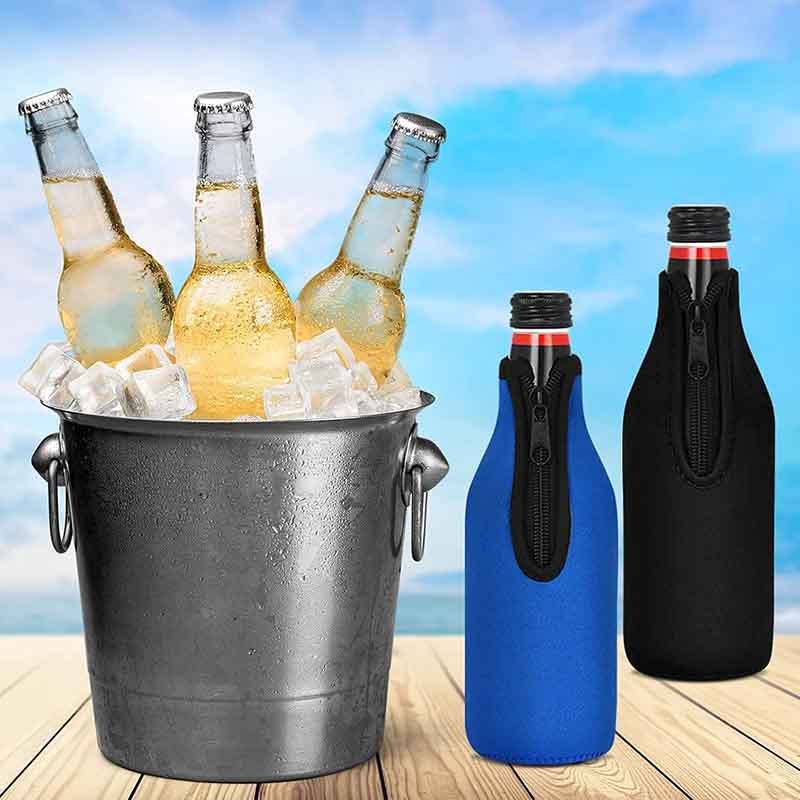
UV exposure, ozone, chemicals, moisture, and thermal cycling degrade neoprene over time. UV and ozone cause surface cracking; chemicals swell or embrittle foam; moisture ingress through microcracks reduces insulation. Repeated heating and cooling cycles increase compression set and cell collapse. Proper stabilization—UV inhibitors, antioxidants, protective coatings—and periodic inspection extend service life, maintaining consistent thermal resistance throughout the product lifespan.
- UV and Ozone Degradation
- Mechanism: UV radiation breaks carbon–carbon bonds, leading to surface crazing and micro-crack formation. Ozone attacks unsaturated sites in the polymer backbone.
- Effects on Insulation: Micro-cracks allow air and moisture ingress, creating thermal bridges that reduce R-value by up to 20% over 2 years in outdoor applications.
- Mitigation: Formulations include UV stabilizers (benzotriazoles) and antiozonants (ortho-phenylenediamines). External coatings (paints or laminates) add extra protection.
- Chemical Exposure and Swelling
- Common Agents: Oils, fuels, solvents, acids. These can plasticize or extract additives, altering cell walls.
- Performance Loss: Swelling can increase apparent thickness but degrade cell integrity, dropping thermal resistance by 15–30%.
- Selection Tip: Choose oil- or chemical-resistant grades; perform compatibility tests per ASTM D471 before specification.
- Moisture and Hydrolytic Aging
- Closed-Cell Advantage: Neoprene resists water absorption (<3% by volume). However, micro-cracks from other factors can allow water ingress.
- Consequences: Water in cells conducts heat 25× faster than air, dramatically reducing insulation. Freeze–thaw cycles can further damage cell walls.
- Prevention: Ensure proper gasketing, seal seams, and consider water-resistant coatings for long-term submerged use.
- Thermal Cycling and Compression Set
- Cycling Stress: Repeated exposure to extremes (–40 °C to +120 °C) causes gradual loss of elasticity. Cells fail to recover, leading to permanent deformation under compression.
- Data Point: Standard neoprene may show a 25% compression set after 72 h at +100 °C, reducing sealing force and insulation efficacy.
- Material Choice: High-temperature neoprene and optimized cross-link densities limit compression set to <15% under similar conditions.
- Aging Tests and Service Life Prediction
- Accelerated Aging: Simulate 5–10 years of field exposure by subjecting samples to UV, ozone, heat, and humidity cycles in environmental chambers.
- Life Estimates: Well-stabilized neoprene can maintain >80% of initial R-value after 5 years outdoors; unprotected foam may fall below 60% in 2 years.
- Maintenance Protocols: Regular inspections, replacement schedules, and use of protective covers preserve thermal performance.
Understanding how environmental and aging factors erode neoprene’s insulation lets you plan maintenance, choose protective measures, and specify grades that deliver reliable performance throughout the product lifecycle.
What Should Buyers Consider When Specifying Neoprene Insulation?
Buyers should map operational temperature extremes, chemical exposures, fire safety standards, mechanical loads, and environmental conditions. Cross-reference these with neoprene grade data (temperature range, density, compression set, certifications). Factor in part geometry, thickness, fabrication method, and minimum order quantity. Request third-party test reports and physical samples. Finally, evaluate supplier capabilities for custom compounding, prototyping speed, and technical support to ensure your insulation meets both performance and logistical needs.
- Application Requirements
- Temperature Profile: Document both continuous and peak temperatures. Include ramp-up/ramp-down rates if rapid cycling occurs.
- Chemical & UV Exposure: List all potential fluids, gases, and light exposure. Map against grade resistance charts.
- Mechanical Loads: Define compression, tensile, and flexural stresses. Neoprene grades vary in compression set and elongation properties.
- Material Specification
- Grade Selection: Use the comparative table (see Section 2) to shortlist 2–3 candidate grades. Compare temperature limits, densities, and key additives.
- Certifications & Standards: Require test reports per ASTM D1056, ASTM D2000, UL 94, ISO 6941, or industry-specific standards (e.g., EN 45545).
- Design & Fabrication
- Geometry & Thickness: Optimize insulation thickness for R-value while minimizing weight and bulk. Consider thermal bridges at seams—use welded or fully molded constructions for critical applications.
- Surface Treatments: Decide if lamination (foil, fabric) or coatings (PVDF, acrylic) are needed for UV, chemical, or flame resistance.
- Supply Chain & Logistics
- MOQ & Lead Time: Discuss low-MOQ custom runs (as low as 50 pcs at Szoneier) and rapid sampling timelines (5–7 days typical). Large-scale projects can leverage Szoneier’s 150,000 pcs/day capacity.
- Quality Assurance: Audit supplier’s in-line testing—density checks, compression set machines, thermal conductivity rigs—and request batch certificates.
- Cost vs. Performance Trade-Off
- Budget Planning: Higher-performance grades cost 20–50% more. Balance upfront material cost against lifetime savings from energy efficiency, reduced maintenance, and downtime avoidance.
- Total Cost of Ownership: Factor in installation, replacement cycles, and energy savings. Superior neoprene insulation can cut heat loss by up to 40%, paying back in <2 years in high-energy settings.
- Technical Support & Collaboration
- Sample Testing: Always trial prototypes in real equipment. Szoneier offers free samples for on-site testing.
- Ongoing Support: Look for partners providing application engineering, failure analysis, and on-demand compounding tweaks.
Armed with these considerations, you’ll specify neoprene insulation that not only meets performance targets but also aligns with project budgets and timelines.
Conclusion
Neoprene’s versatility—from –70 °C cryogenic stability to +200 °C high-heat resistance—makes it indispensable across industries. By understanding grades, testing standards, environmental impacts, and specification best practices, you can ensure optimal insulation performance, reduce energy costs, and prevent premature failures.
Ready to customize neoprene insulation for your next project? Contact Szoneier today for free design consultation, rapid prototyping, and low-MOQ custom runs.
Let our 18+ years of R&D and manufacturing expertise deliver the perfect neoprene solution tailored to your exact temperature and application needs.
Read More:
How To Choose The Right Neoprene Thickness: 1mm To 7mm Explained


